A NeoTimber® deck replacement versus decking repair – let’s look at the facts and the options.
Decking is a popular way to create a dining and living space in your garden. Favoured over patios for its sheer convenience, many homeowners installed decking in the last 10-15 years as a cheap and quick way to expand their outdoor living space. Convenient, because it can be easily adapted to fit a sloping garden, decking has been the landscaping option of choice for many years. However, timber, even when well treated, stained, stripped and repainted, still has as a relatively short shelf life. Eventually, timber will begin to deteriorate, with patches of mould building up in damp corners, with the deck boards themselves cracking, warping and even rotting. Once decking mould has set in, it can be difficult to remove.
This guide shall provide you with a list of main considerations to help you decide whether it’s time to repair your existing decking or replace it entirely. Let’s take a look…
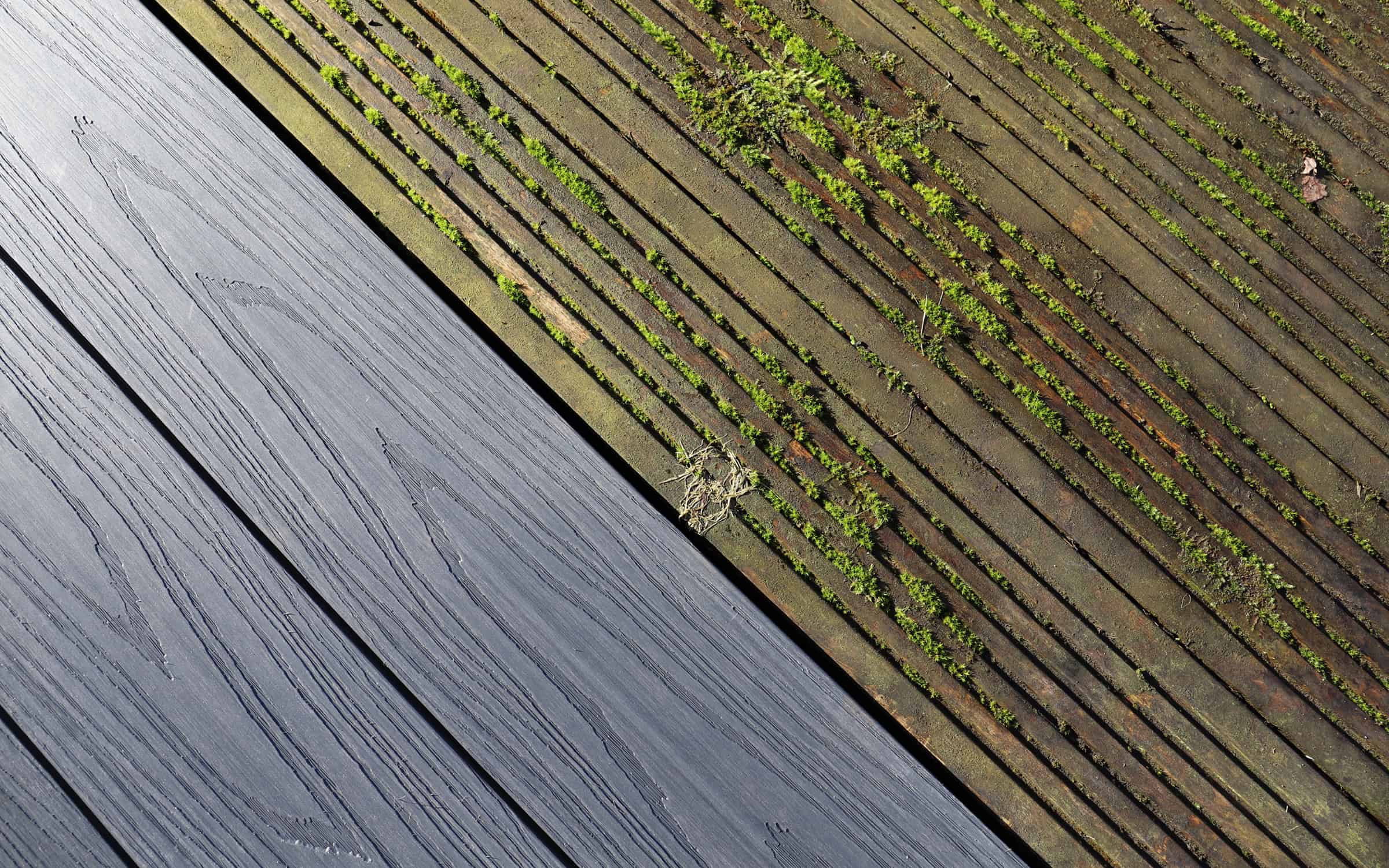
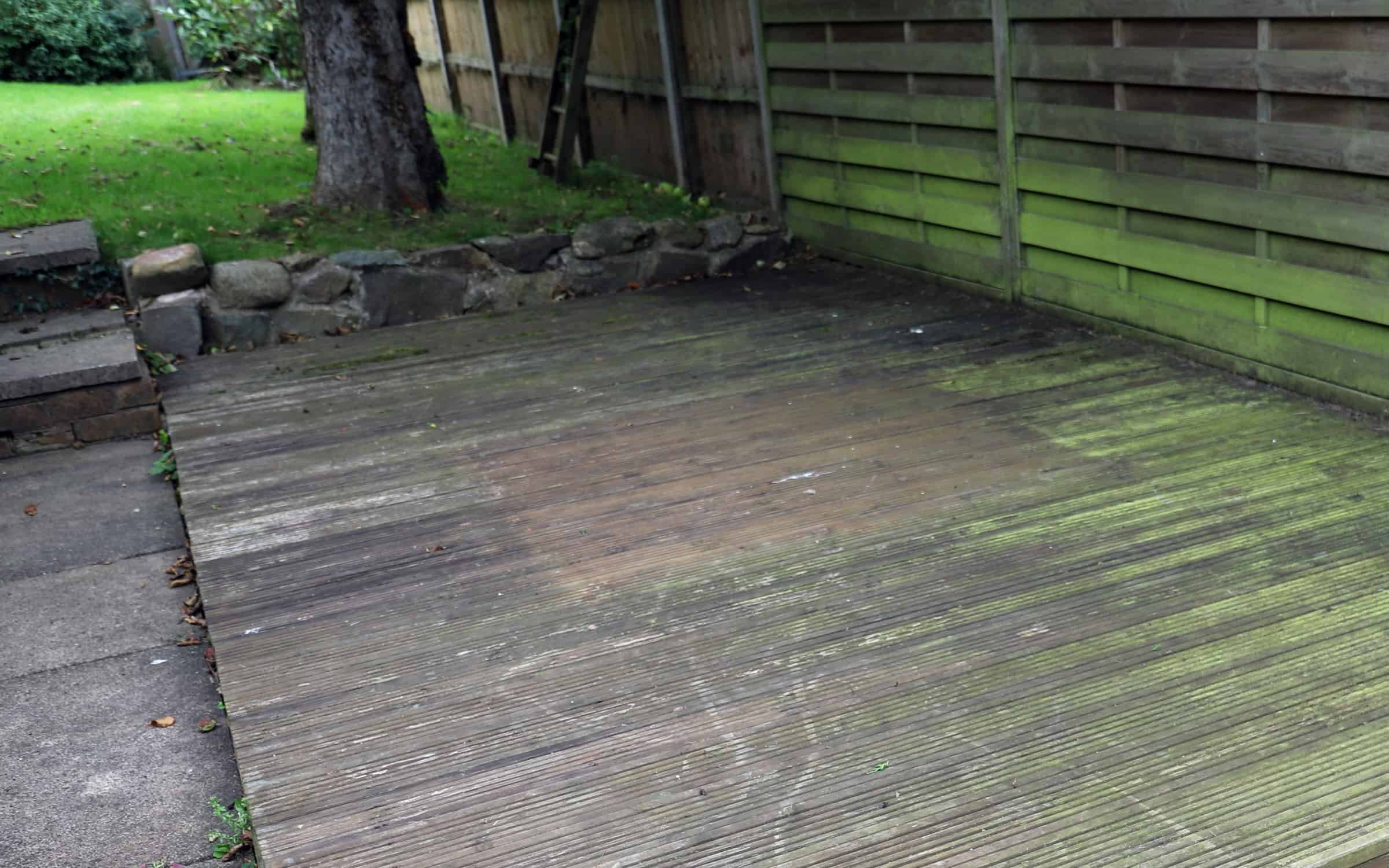
Consider The Health Of Your Deck
Whether you have inherited a deck from your new house move or your old deck has simply seen better days, the question you will find yourself asking is whether to repair any damage to the decking, or to replace the boards entirely with a newer alternative.
The answer may not be a simple one. To help you make your decision, look for warped boards, areas of damage due to mould build-up and rotten sections. Make a full assessment to ensure that so that you know exactly what you are dealing with.
Is It Time For A New Subframe?
The first thing to do is check your existing timber framework for any structural weakness. How does it feel to walk upon? A deck is only as strong as its foundations. First, check the conditions of the joists underneath the deck. If they are still in relatively good condition, you can simply reinforce your existing framework to make sure it will last longer.
However, if your joists and underneath frame are rotten, a replacement subframe will be needed. There are many options available, including using a pressured treated timber subframe, with or without the use of joist tape. For additional longevity and peace of mind, we would recommend using either a composite joist or recycled plastic joist subframe. The plastic in both these materials will not succumb to rot, allowing it to outlast timber alternatives. Check out our guide to choosing the best subframe for your environment for more help on this.
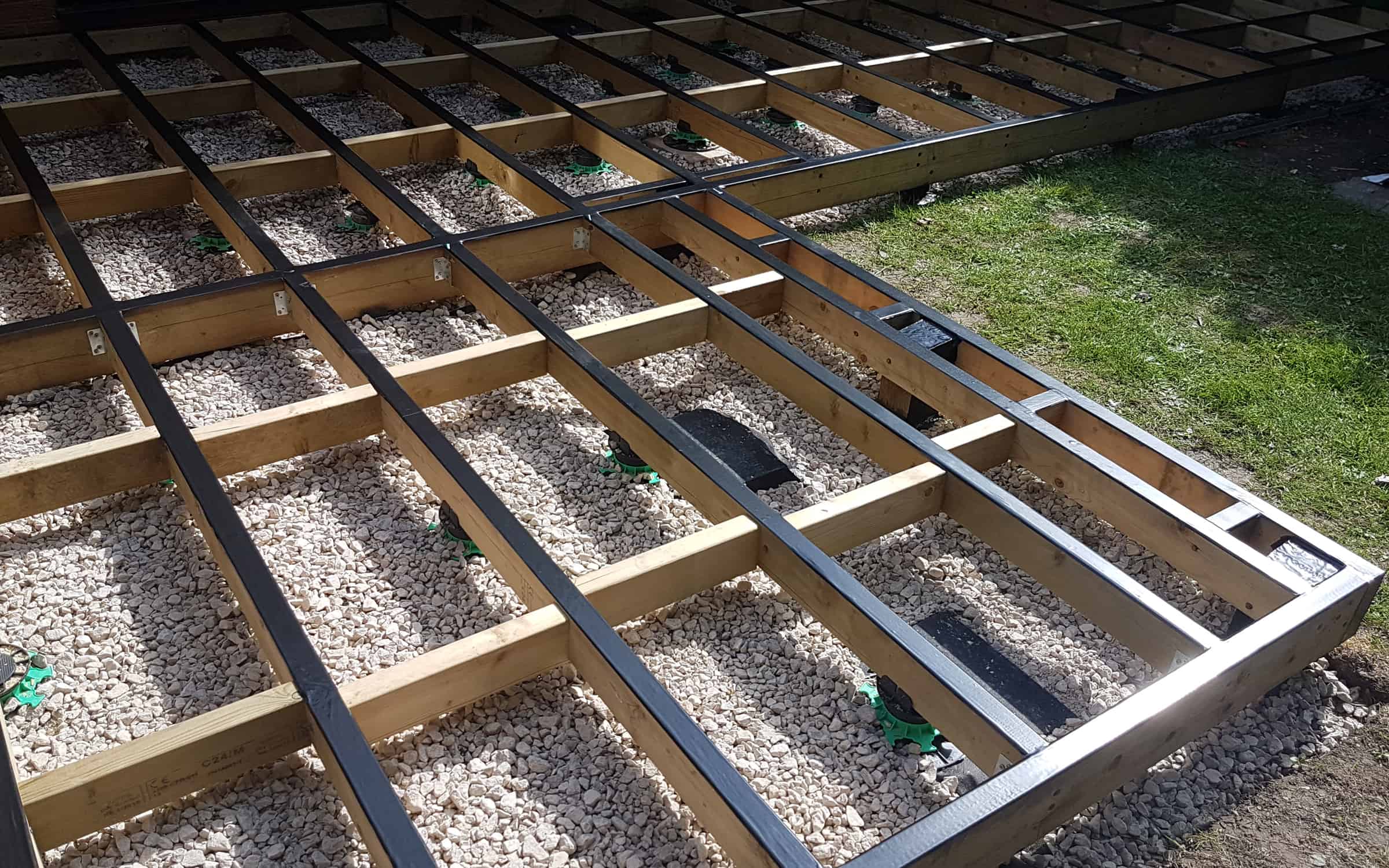
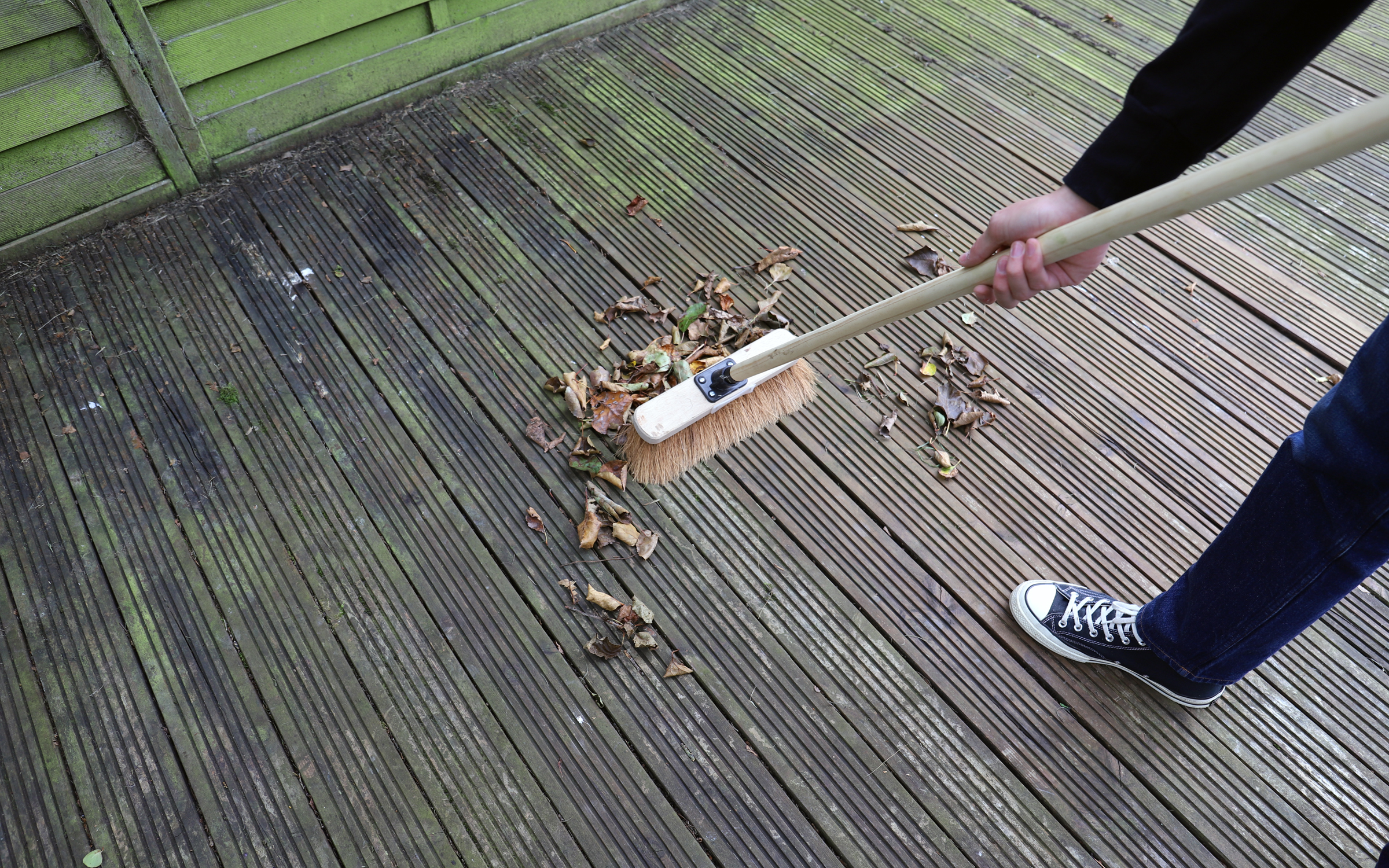
Inspect The Condition Of Your Boards
Visible damage such as cracking, warping and rot are the main things to look out for when deciding if an entire replacement subframe is needed for your decking. More aesthetic surface damage, such as splintering, scratching or discolouration, can be repaired. For example, both composite decking and traditional decking can be lightly sanded to remove any light surface scratches.
Repairing timber decking involves a fair consideration of labour-intensive work. Similarly, treating timber with preservatives is extremely time consuming and will be something you will have to repeat every year. One of the key advantages of composite material is that it is low maintenance, requiring only a basic clean every couple of months.
Keep The Subframe & Replace Just Your Deck Boards?
Another alternative idea is to keep your existing subframe but replace the decking boards. You will need to first check if your existing timber subframe is suitable for the new boards you wish to install, as these boards may not be compatible with the size of the frame. If you choose to install composite decking onto a timber subframe, for instance, you will need to check the manufacturer recommendations from decking suppliers on joist centres. NeoTimber® deck boards require joist spacings of 250-350mm. This may mean you need to reinforce your existing subframe with additional joists to narrow the gaps.
Installing new decking boards, whether they be timber or composite, onto a failing timber subframe can be dangerous (a little like building a house on sand). Take the time to look for visible signs of decay or weakening in the framework before proceeding with this plan.
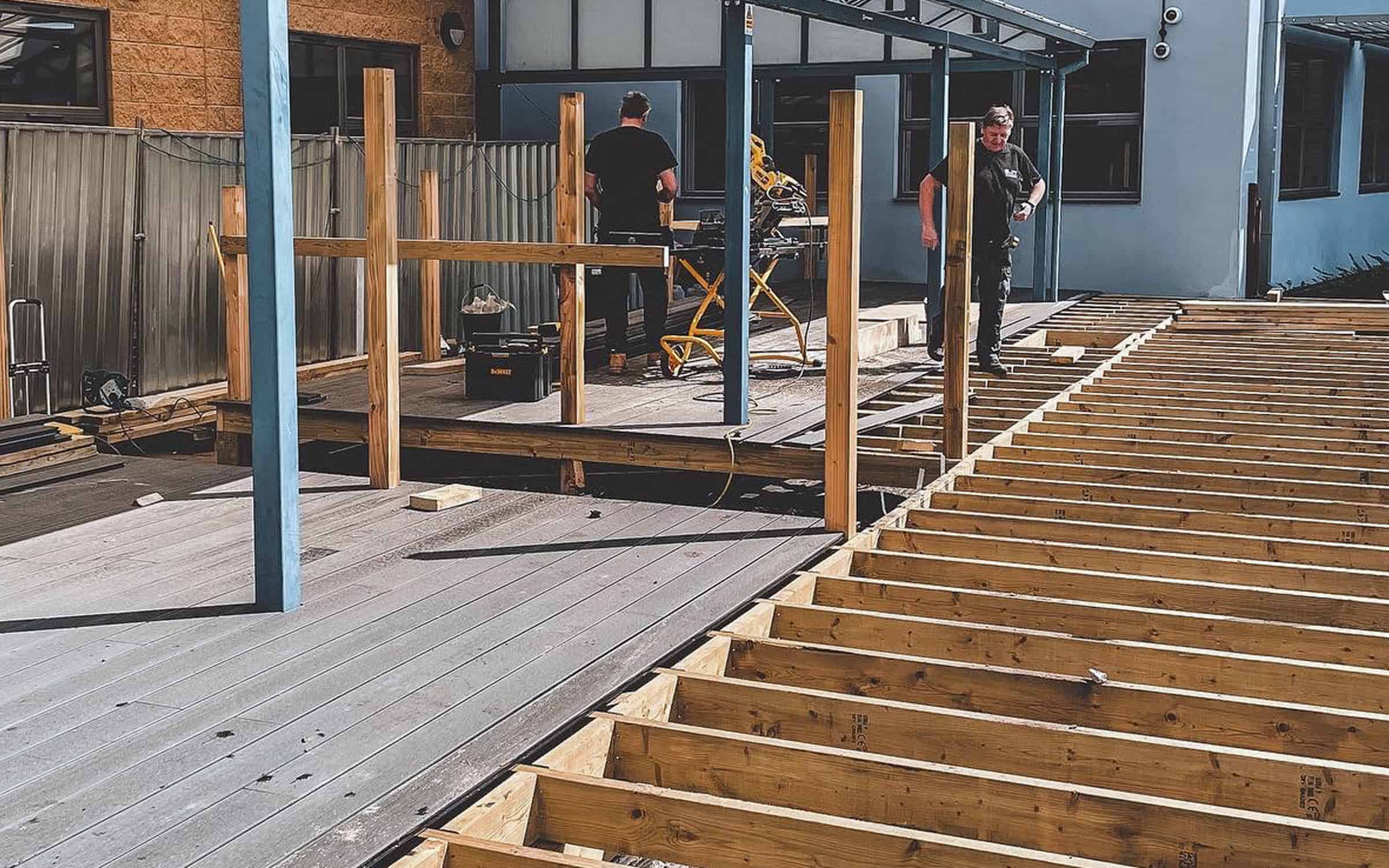
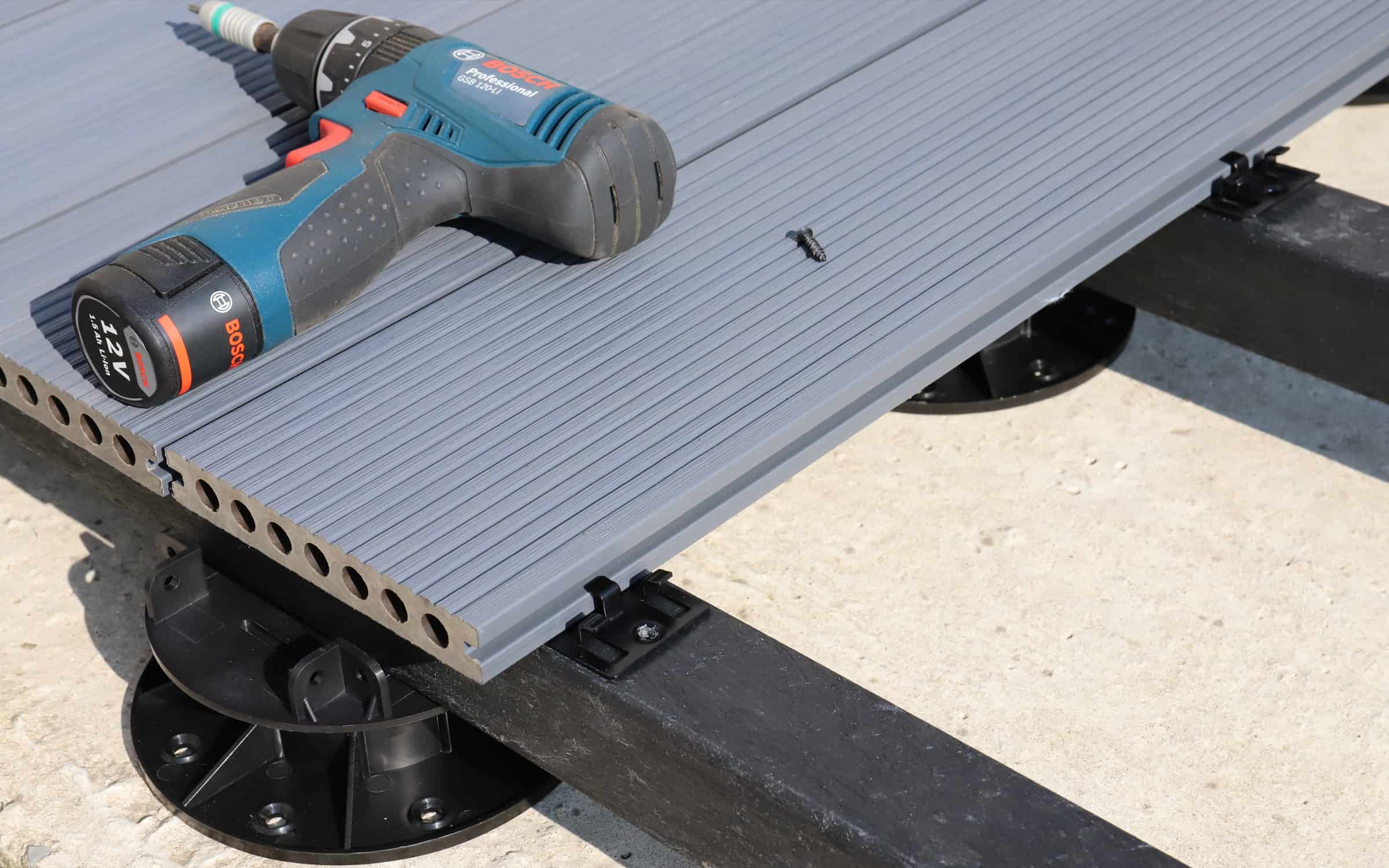
Replace The Entire Deck & Subframe
There are many benefits to just scrapping your old decking and starting completely from scratch. For one, it will allow you to re-design your area into something more contemporary and build foundations that are more appropriate for your space. If you have soft ground, your frame will need rigid posts, but if your garden already has hard ground; you can simply use WPC joists or adjustable pedestals to build a recycled plastic subframe.
There are many different types of material to choose from when laying your decking boards on top of your frame. These include hardwood or softwood timber, PVC, aluminium and composite materials, all of which will have different advantages and disadvantages. If you do decide to opt for NeoTimber® composite decking boards, check out our buying guide to help you decide which of our products is right for you.
Assess Whether New Design Features Are Required
A replacement deck gives you the perfect opportunity to reassess the design of your decking. As homeowners are becoming more adventurous with designs, many landscapers are now able to accommodate your requirements for a picture frame or herringbone laying pattern or incorporate adventurous step ideas.
If you’re wanting to incorporate any of these decking design features, these will need to be incorporated into your initial planning discussions. Speak to your landscaper and talk through your ideas with them and ask for examples of their work to see if they have undertaken similar projects (you can check-out a host of creative ideas in our inspiration section).
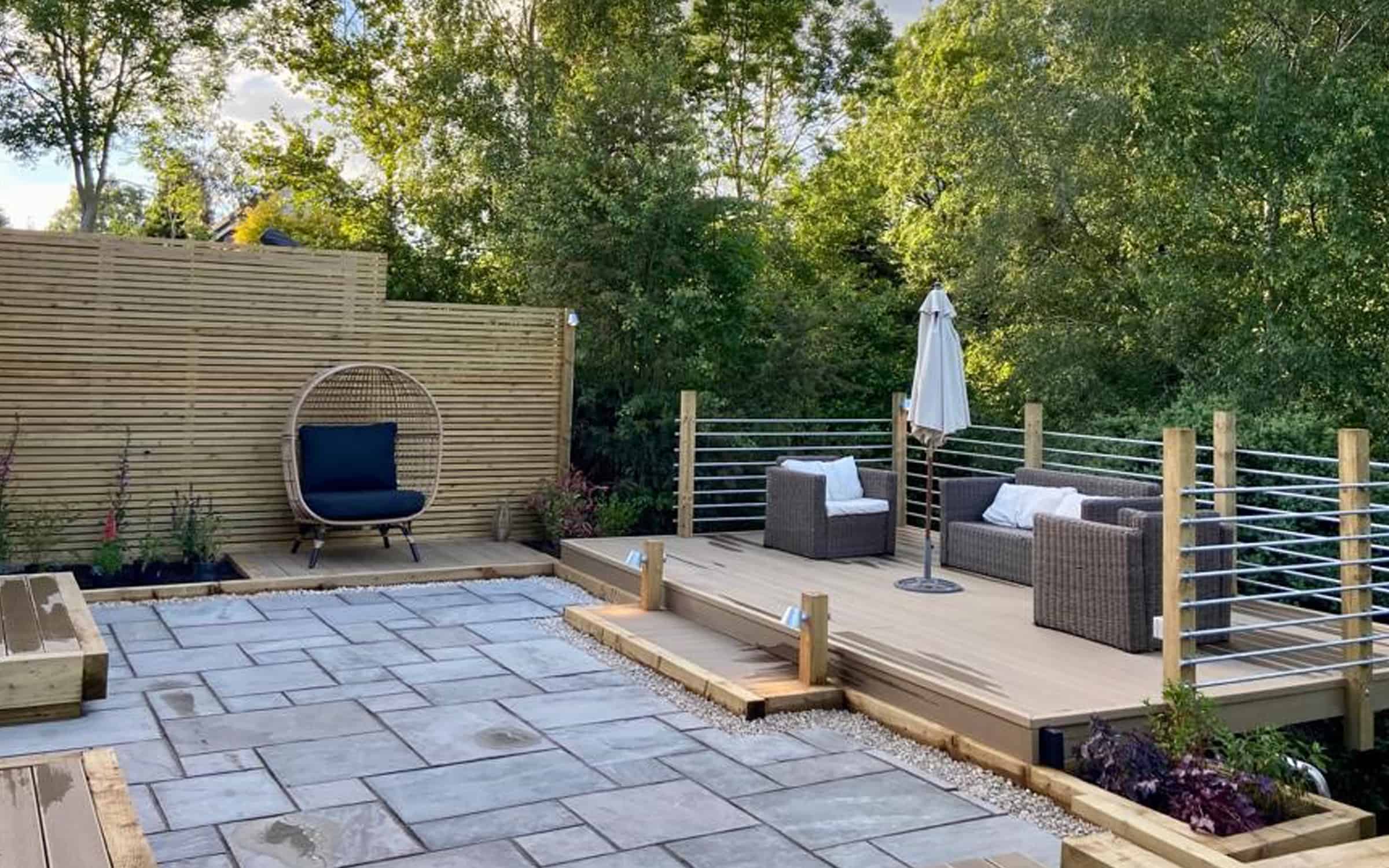
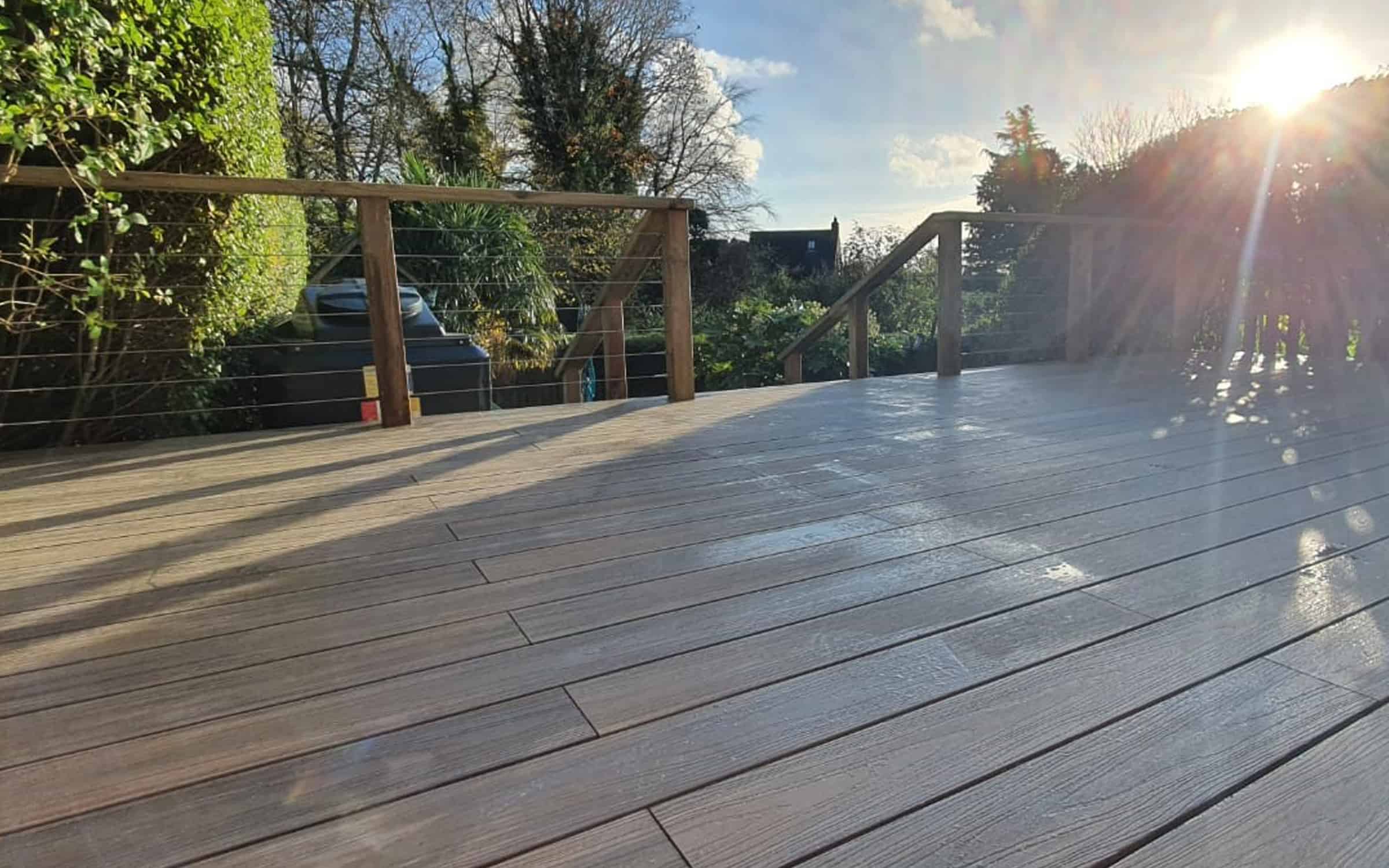
Choose The Right Supplier Of Your New Decking Material
It may be that after years of patching, painting, stripping and varnishing your timber deck that you are finally through with the constant maintenance needed with wood. At this stage, you should consider an alternative to timber decking. One such alternative is composite decking, made of a eco-friendly combination of reused wood fibres and recycled plastic.
At NeoTimber®, we believe that two things are key to being successful as a supplier of composite timber. The first is ensuring we develop and supply a quality product, which looks great and performs well. The second is equally as important; a focus on providing value for money. Our composite decking offers the best of both worlds, the look of timber with the water-resistance of plastic.
Need Further Support or Advice?
If you’ve still got questions that have not been answered here, or you would like additional advice,
support or assistance then please give one of our friendly experts a call and we’ll be happy to help.
Just give us a call on 01530 382 180.
